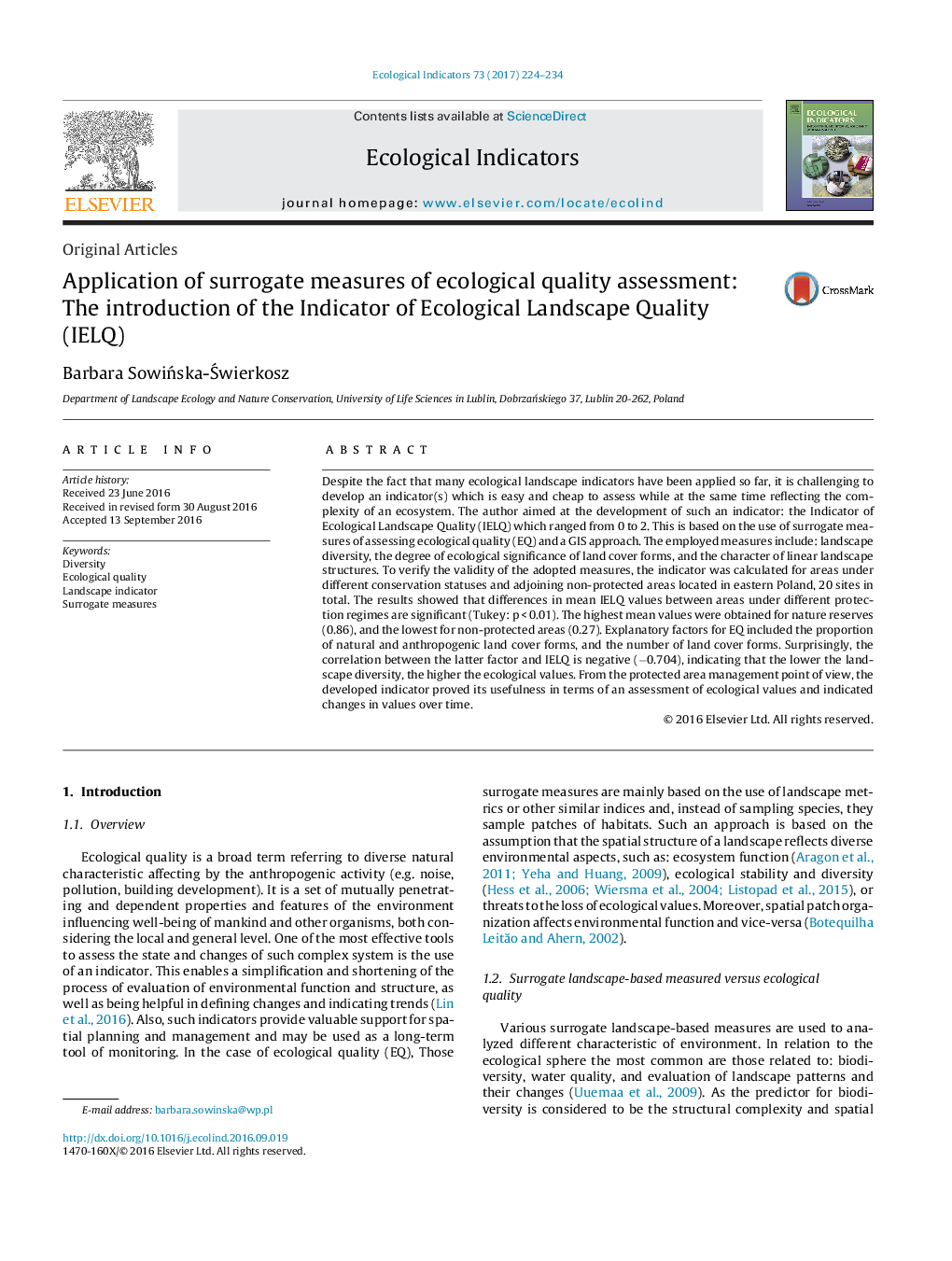| Article ID | Journal | Published Year | Pages | File Type |
|---|---|---|---|---|
| 6292562 | Ecological Indicators | 2017 | 11 Pages |
Abstract
Despite the fact that many ecological landscape indicators have been applied so far, it is challenging to develop an indicator(s) which is easy and cheap to assess while at the same time reflecting the complexity of an ecosystem. The author aimed at the development of such an indicator: the Indicator of Ecological Landscape Quality (IELQ) which ranged from 0 to 2. This is based on the use of surrogate measures of assessing ecological quality (EQ) and a GIS approach. The employed measures include: landscape diversity, the degree of ecological significance of land cover forms, and the character of linear landscape structures. To verify the validity of the adopted measures, the indicator was calculated for areas under different conservation statuses and adjoining non-protected areas located in eastern Poland, 20 sites in total. The results showed that differences in mean IELQ values between areas under different protection regimes are significant (Tukey: p < 0.01). The highest mean values were obtained for nature reserves (0.86), and the lowest for non-protected areas (0.27). Explanatory factors for EQ included the proportion of natural and anthropogenic land cover forms, and the number of land cover forms. Surprisingly, the correlation between the latter factor and IELQ is negative (â0.704), indicating that the lower the landscape diversity, the higher the ecological values. From the protected area management point of view, the developed indicator proved its usefulness in terms of an assessment of ecological values and indicated changes in values over time.
Related Topics
Life Sciences
Agricultural and Biological Sciences
Ecology, Evolution, Behavior and Systematics
Authors
Barbara SowiÅska-Åwierkosz,
